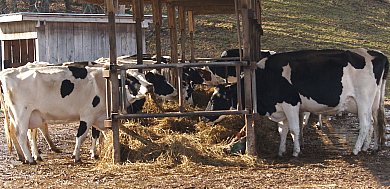You don’t milk 1,200 cows, but you milk more than 50. You don’t farm 2,000 acres, but you farm more than 50. You don’t have 200 acres of fruit trees, but you have more than 50. You don’t feed out 500 head of beef cattle, but you have more than 5. You raise chickens, but you’re definitely beyond backyard poultry status. You farm, but you produce for the commodity market. Farming is your primary occupation and chief source of income.
You’re not alone. In fact, you’re the majority.
Welcome to agriculture in the middle.
Nationally, mid-sized farms make up the largest share of “working farms.” You’re not too big, but not too little. Goldilocks might say you’re just right.
But you probably feel like the fairy tale character might be the only one showing you some love right now.
Regulations pound you from all directions. The USDA often seems to lean toward “small farm mode” and ignores you, and yet others say you’re too small for them to bother with. Still others, who even wave the “ag in the middle” flag, don’t really understand you, because they believe the only hope for your future success lies in selling a value-added product or direct marketing. While developing a stronger farm-to-consumer food chain is a solid option, and one I think merits more attention and resources, it’s not the only option.
So what do you do, where do you turn, how do you stay focused?
Here’s what I believe: You’re more nimble than you realize, and you’re smarter than you think.
What you might need to do, though, is stretch your comfort zone. You can stick with the “same old, same old” if it’s working for you, but if you’re not making money, that mindset could be fatal for your farm.
Figure out what part of your farm management you do really well (hint, it’s probably something you like to do, or you look forward to doing, or what gives you the most satisfaction, or what pumps you up). And be honest about what you don’t do well. Then work around your strengths, and get someone else to help you do the rest.
You should have the opportunity to do what you do best every day.
Think about it. If you’re really good working with cows (the herd health, the breeding, the rations, the milk production), but stink at crop production (the variety selection, the soil fertility, the tillage, the chemistry, the marketing), why not work where your skills will give you the greatest return on investment? Or if you love crunching numbers, but aren’t a “cow man,” you’re wasting your talents in the barn and are better off in the barn office.
I read once that “when you focus on your strengths, you do the work that gives you energy. You do the work that drives you, that makes you giggle, that keeps you up late because you’re just having too much fun to stop.” Remember what you love most about farming, and that’s what you should be doing.
It’s not always realistic or possible to do only these things, but you will be more successful if you can work in your areas of strength more than you work in your weaknesses.
Being in the middle isn’t so bad, after all.
By Susan Crowell













